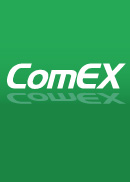
- |<
- <
- 1
- >
- >|
-
Sojin Ozawa, Tokio Ikuta, Yuki Sasaki, Ryo Iwaki, Jin Nakazato, Manabu ...Article type: LETTER
Subject area: Wireless Communication Technologies
2024Volume 13Issue 5 Pages 146-150
Published: May 01, 2024
Released on J-STAGE: May 01, 2024
JOURNAL FREE ACCESSThis article proposes a millimeter-wave fast beam tracking algorithm for moving vehicles, considering a geometry of road environment. Focusing on the fact that vehicle movement is constrained on roads, horizontal and vertical beam directions are determined based on obtainable driving direction and road shape. In addition, we perform a two-pattern beam selection for the vehicle’s forward and rearward directions to estimate the beam tracking speed. By conducting simulations using SUMO, which emulates vehicle movement on various roads, we verified the effective operation of the proposed scheme and confirmed its superiority over the existing beam sweeping approach.
View full abstractDownload PDF (2651K) -
Yuma Nishimura, Wataru Chujo, Kentaro KobayashiArticle type: LETTER
Subject area: Wireless Communication Technologies
2024Volume 13Issue 5 Pages 151-155
Published: May 01, 2024
Released on J-STAGE: May 01, 2024
JOURNAL FREE ACCESSResearch on high-throughput optical wireless communication (OWC) has been progressing toward sixth generation. As half-power beam width of near-infrared 600 Mbps light emitting diode backhaul (LEDBH) consisting of LED and photodiode is narrow, high-precision optical axis alignment of LEDBH is important. So far, the optical axis was manually aligned using a scope. In this study, object detection using deep learning, YOLOv7, is adapted to automatically align the optical axis. Average precisions of LEDBH detection are evaluated in lighting surroundings while changing the camera exposure time. The optical axis is finely adjusted with object detection and mechanical angle adjustment.
View full abstractDownload PDF (2885K) -
Yasutaka Kimura, Naotaka Shibata, Shin Kaneko, Jun-ichi Kani, Tomoaki ...Article type: LETTER
Subject area: Network System
2024Volume 13Issue 5 Pages 156-158
Published: May 01, 2024
Released on J-STAGE: May 01, 2024
JOURNAL FREE ACCESSWe demonstrate an extended ROADM architecture with remote TRx control and a turn-back function that enables end-to-end direct optical connections covering access. The acceptable access loss of the turn-back path is within 3-19 dB, thus meeting the requirements of the class-S optical access infrastructure.
View full abstractDownload PDF (414K) -
Tianhao Zhu, Jiwon Lee, Bojian Du, Ryoma Kondo, Kentaro Matsuura, Hiro ...Article type: LETTER
Subject area: Network
2024Volume 13Issue 5 Pages 159-162
Published: May 01, 2024
Released on J-STAGE: May 01, 2024
JOURNAL FREE ACCESSThis study evaluates an extended Berkeley Packet Filter (eBPF)-based network failure prediction method using Autogluon-Tabular to process the fine-grained network information extracted by eBPF. The extracted information is considered as input features of the proposed model, which aims to predict the subsequent packet loss and determine a network failure event before it causes a huge impact. Supervised learning and semi-supervised learning are both adopted in Autogluon. The accuracy and detection time are evaluated as the main criteria. Simulation results show that F1 scores exceed 0.9 for our proposed method, and the proposed method can achieve prediction for potential failure events within 30 and 40 seconds when symptoms such as packet loss occur.
View full abstractDownload PDF (1041K) -
Kazumitsu Sakamoto, Yosuke FujinoArticle type: LETTER
Subject area: Satellite Communications
2024Volume 13Issue 5 Pages 163-166
Published: May 01, 2024
Released on J-STAGE: May 01, 2024
JOURNAL FREE ACCESSIn a 920-MHz band Internet-of-Things (IoT) platform via a low Earth orbit satellite, signal collisions frequently occur between the desired satellite IoT (S-IoT) terminals and interference from terrestrial IoT (T-IoT) terminals accommodated in the T-IoT platform. In this letter, computer simulation is used to evaluate the capacity for S-IoT terminals per satellite that can be achieved by applying minimum mean squared error receiver beamforming in each case of using low power wide area terminals of LoRa, Sigfox, and ELTRES. The results show that a satellite can accommodate 1 million-order terminals by using multiple channels in the 920-MHz band.
View full abstractDownload PDF (627K)
- |<
- <
- 1
- >
- >|